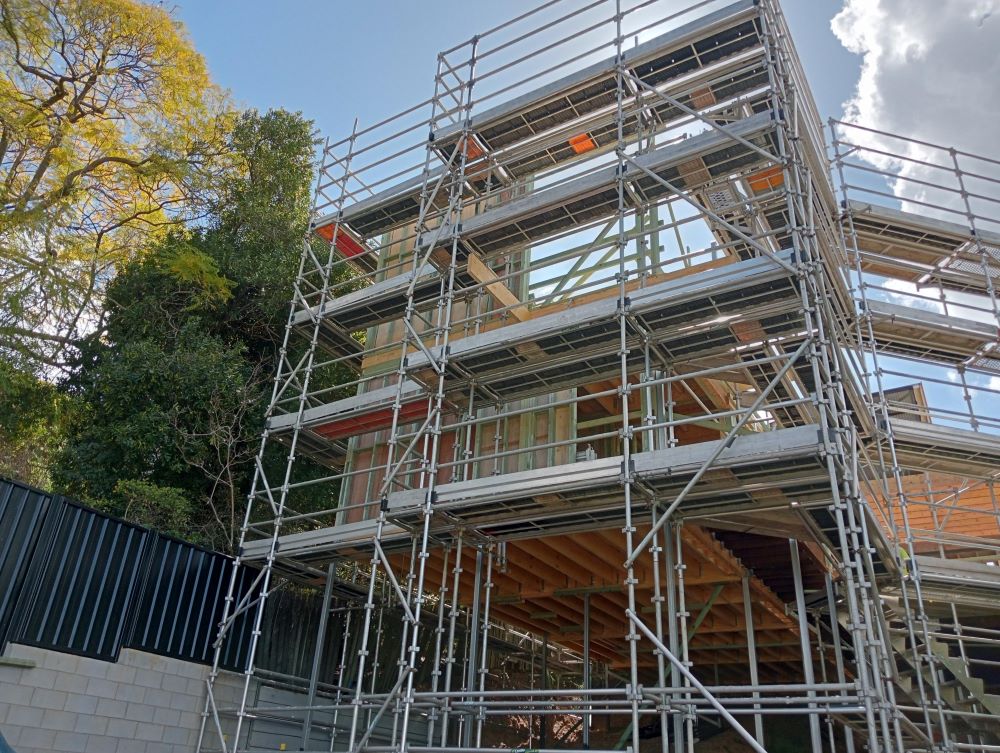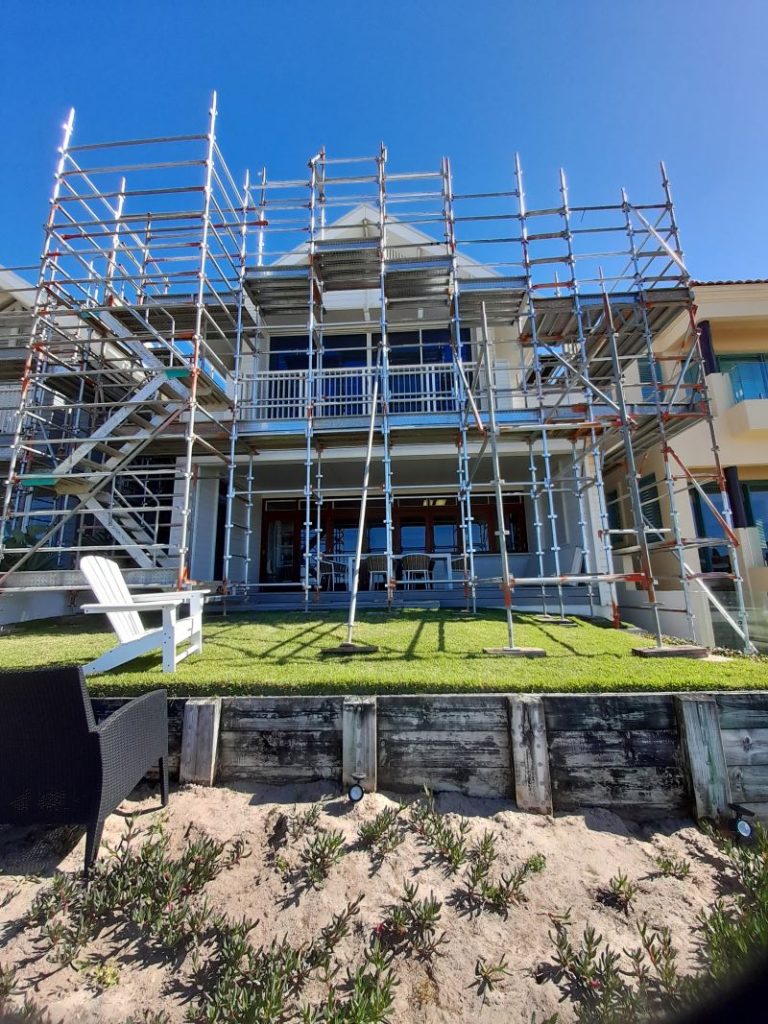Comprehensive Analysis of Aluminium vs. Steel Scaffolding for Optimal Construction Outcomes
Selecting the right scaffold for your construction or renovation project is crucial to ensure both safety and efficiency. The two most popular options are aluminium scaffolding and steel scaffolding. Each material features distinct characteristics, benefits, and suitability for various project needs. This extensive guide aims to deliver an in-depth comparison of these two scaffolding types, highlighting their specific features, benefits, and ideal applications. By the end, you'll be equipped with the knowledge necessary to make an informed decision on the best scaffold type for your project requirements.
When evaluating scaffold options, it’s essential to understand the unique advantages each material brings to the table. Both aluminium and steel scaffolding have their distinct attributes, which we will explore in detail to empower you with the insights needed to make a sound choice that aligns with your project's specific demands.

Unlock the Full Potential of Aluminium Scaffolding for Your Construction Projects
Aluminium scaffolding is widely appreciated for its lightweight nature and exceptional ease of handling, making it an ideal choice for projects that require frequent movement and swift assembly. The components of aluminium scaffolding are significantly lighter than those made from steel, enhancing both transportation and manoeuvrability on the job site. This advantage is particularly beneficial for contractors working in confined spaces or those who need to reposition scaffolding materials regularly, ensuring a smoother workflow and improved efficiency throughout the construction process.
In addition to its lightweight properties, aluminium scaffolding is renowned for its remarkable corrosion resistance. This characteristic makes it a prime option for outdoor projects or environments with high humidity, ensuring that the scaffold retains its structural integrity and visual appeal over time. The corrosion-resistant nature of aluminium scaffolding greatly contributes to its long-term performance and dependability, which is especially crucial for projects exposed to adverse weather conditions or moisture.
The setup and dismantling of aluminium scaffolding are typically quick and straightforward, as the components are designed for user-friendly assembly. This efficiency not only leads to significant time savings on-site but is especially valuable for projects constrained by tight deadlines. By minimizing the time spent on assembly, construction teams can concentrate more effectively on completing their tasks, ultimately enhancing overall productivity and safety on the job site.
Discover the Unmatched Strength and Stability Offered by Steel Scaffolding
Steel scaffolding is acclaimed for its superior strength and impressive load-bearing capacity, making it an exceptionally durable choice for construction projects that demand robust support. This material is specifically engineered to withstand substantial weight and challenging conditions, providing a stable platform for workers even in high-stress environments. Its rigidity and overall strength make steel scaffolding the preferred option for projects involving heavy machinery or significant materials, ensuring safety and reliability at elevated heights.
The durability of steel scaffolding is a notable advantage, especially in extreme weather conditions or high-traffic areas where the scaffold may endure heavy usage. Unlike lighter materials, steel scaffolding is built to resist bending or deformation, ensuring a secure working environment for personnel. This reliability instills confidence and a sense of safety among construction teams, allowing them to work with peace of mind, knowing they are supported by a sturdy structure.
Furthermore, steel scaffolding is recognized for its cost-effective longevity. Although the initial investment may be higher compared to aluminium, the durability and extended lifespan of steel scaffolding make it a financially sound choice over time. This material can endure repeated use, resulting in fewer replacements or maintenance needs, thus offering substantial savings in the long run. When considering your options, think about how the upfront costs may be outweighed by the long-term benefits steel scaffolding provides.
As you weigh the decision between aluminium and steel scaffolding, it is essential to evaluate the unique requirements of your specific project. Considerations such as material weight, scaffold height and size, and the environmental conditions at the job site will significantly impact your final choice.
Consulting with your scaffold hire company can provide invaluable insights, assisting you in selecting the most suitable option for your project’s specific demands. For additional information on when scaffolding is necessary and the types of projects that may require it, check out our article on when to hire scaffolding.
Essential Factors to Evaluate When Choosing the Right Scaffold Material
Several critical factors must be considered when deciding between aluminium and steel scaffolding. A comprehensive understanding of each scaffold material's strength and durability, weight and portability, and cost and affordability will empower you to make an informed decision that aligns with your project's specific needs and constraints. By thoroughly assessing these aspects, you can ensure that your scaffold choice supports your operational goals while maximizing safety and efficiency on site.
Evaluating the Strength and Durability of Scaffolding Materials
Both aluminium and steel scaffolds are recognized for their strength and durability, yet they exhibit distinct qualities that may influence your choice. Steel scaffolding is typically regarded as having superior strength and load-bearing capacity compared to aluminium scaffolding. The robust composition of steel allows it to endure heavy loads and provide stability in demanding construction scenarios, making it an attractive choice for projects that require reliable support.
On the other hand, aluminium scaffolds, while still strong and durable, may not support exceptionally heavy loads as effectively as their steel counterparts. Therefore, it is imperative to carefully evaluate your project’s weight requirements to determine which scaffold material best meets your operational needs and safety standards. Understanding these differences will help you make a decision that ensures the safety and efficiency of your construction efforts.
Examining Weight and Portability Features of Scaffolding Solutions
Aluminium scaffolds have a significant advantage when it comes to weight and portability. Their lightweight design allows for much easier handling and transportation than the heavier steel alternatives. This feature proves particularly advantageous in smaller-scale projects or situations where scaffolding requires frequent repositioning, as it minimizes physical strain on workers and enhances overall productivity on the job site.
While steel scaffolds may be bulkier, they still offer some degree of portability; however, they typically require more effort and manpower during transportation. Understanding the relevant weight and portability aspects of your project will help ensure efficient and safe use of scaffolding throughout your operations, leading to improved dynamics and workflow on the job site.
Uncover the Unique Advantages of Aluminium Scaffolding for Your Projects
Upon evaluating various scaffold materials, aluminium scaffolding presents a range of unique advantages that make it a favored choice for numerous construction and renovation projects.
Experience Effortless Handling with the Lightweight Design of Aluminium Scaffolding
A standout advantage of aluminium scaffolding is its lightweight design. When compared to steel scaffolding, aluminium is significantly lighter, which enhances its manageability and transportability. This characteristic not only accelerates assembly and disassembly but also contributes to a more efficient workflow, ultimately shortening the overall project timeline. Moreover, the ease of handling significantly boosts worker productivity, reducing the risk of fatigue-related accidents and enhancing overall safety on site.
Enjoy Long-lasting Performance with Exceptional Corrosion Resistance
Aluminium scaffolding exhibits remarkable corrosion resistance, making it an excellent choice for a wide range of environmental conditions. Unlike steel, which is prone to rust and deterioration, aluminium’s natural resistance to corrosion ensures that it maintains its structural integrity, even when exposed to moisture or outdoor elements. This feature is particularly advantageous for projects conducted in damp or humid conditions, guaranteeing that the scaffold remains safe and effective throughout its use, thus ensuring optimal performance over time.
Maximize Efficiency with Streamlined Assembly and Disassembly Processes
Another significant benefit of aluminium scaffolding is its quick assembly and disassembly capabilities. The lightweight components, user-friendly connectors, and secure locking mechanisms simplify the setup process. This efficiency is especially valuable in time-sensitive projects or when scaffolding needs frequent relocation. The rapid assembly and disassembly associated with aluminium scaffolding not only saves time but also helps reduce overall labor costs, providing an economic advantage for project managers looking to optimize their available resources.

Explore the Exceptional Advantages of Steel Scaffolding for Construction Projects
Steel scaffolding offers a multitude of benefits that make it a top choice among contractors and builders when selecting the optimal scaffold for their construction projects.
Benefit from Unrivaled Strength and Load Capacity with Steel Scaffolding
One of the primary advantages of steel scaffolding is its unparalleled strength and load capacity. Steel is renowned for its exceptional durability and ability to support considerable loads, which makes it ideal for projects where scaffolding must bear significant weights. Steel scaffold systems are meticulously engineered to provide workers with a stable and secure platform, ensuring their safety while operating at elevated heights and in challenging work environments.
Ensure Safety with Remarkable Durability in Extreme Environmental Conditions
Steel scaffolding is resilient against various environmental factors, making it suitable for harsh construction conditions. It can withstand adverse weather elements, including high winds, heavy rain, and extreme temperature fluctuations. This durability guarantees that the scaffold remains stable and secure, thus establishing a safe working environment for construction teams. Whether tackling projects such as gutter replacements or other demanding tasks that necessitate scaffolding, steel scaffolding is engineered to endure the rigors of any job.
Realize Cost-Effective Longevity with Steel Scaffolding
Steel scaffolding is widely recognized for its exceptional longevity and overall cost-effectiveness. Its inherent durability ensures that the scaffold can withstand numerous construction projects over an extended lifespan. Unlike other materials, steel scaffolding does not degrade quickly, minimizing the need for frequent replacements or repairs. This long-lasting quality makes it a wise financial choice for construction projects, allowing you to allocate your budget effectively while ensuring safety and reliability.
To determine the most suitable scaffold material for your specific project, it is essential to evaluate your unique requirements, consult with industry professionals, and consider safety standards alongside budgetary constraints.
Strategic Steps to Select the Ideal Scaffold for Your Specific Project Needs
Choosing the right scaffold for your project involves a meticulous assessment of your unique needs. By thoroughly evaluating your project requirements, consulting with professionals, and considering safety along with budget constraints, you can make a well-informed decision that aligns with your operational goals and enhances project efficiency.
Thoroughly Assessing Your Project Requirements for Effective Scaffold Selection
Begin by evaluating your project's specifics and the tasks that require scaffold support. Key considerations include the height and configuration of the structure, the anticipated duration of the project, and any specialized requirements that may arise during construction.
For instance, scaffolding for a multi-story apartment complex will have distinct specifications compared to scaffolding or guard rails required for gutter replacements. By gaining a thorough understanding of your project needs, you can determine the appropriate type and configuration of scaffold that best aligns with your operational objectives, ensuring both safety and efficiency on-site.
Leverage Professional Expertise for Optimal Scaffold Selection
Engaging with experts, such as Cando Scaffolding, is highly advisable when navigating the complexities of scaffold selection. Our extensive industry experience guarantees you receive invaluable guidance, helping you to meet safety standards and regulatory requirements throughout your project.
Contact us today or request a quote to begin selecting the ideal scaffold that meets your project’s needs effectively.
The post-Scaffold Choices: Aluminium vs Steel for Your Project appeared first on https://writebuff.com/.
The Article Aluminium vs. Steel: Choosing the Best Scaffold for Your Project Was Found On https://limitsofstrategy.com
Comments are closed


This is a fascinating deep dive into the scaffolding showdown! As someone who once thought I could install my own backyard deck—thankfully I didn’t fall down a rabbit hole of both types—your analysis gives me a lot to mull over. I’ve always heard aluminium is like the lightweight gym buddy, making construction breezy, while steel is that reliable weightlifting partner who can handle the heavy lifting.
This is a fascinating deep dive into the scaffolding debate, and I have to say, it feels a bit like watching an epic showdown between two superhero factions. On one side, we have Aluminium Man with his lightweight agility and resistance to rust – perfect for those high-flying acrobatic renovation projects (maybe he’s the one you want when you’re trying to reach those hard-to-get places without weighing down your crew). And on the other, Steel Hulk, strong, rigid, and reliable for handling heavy-duty jobs, always ready to take on the toughest of challenges.
It’s interesting how you’ve framed the debate around scaffolding as a superhero showdown. It really brings the technical aspects to life, doesn’t it? I can appreciate Aluminium Man’s agility; I think about those renovations in tight urban spaces where being lightweight can make all the difference. The ease of transport and installation makes a compelling case for aluminium, especially when you consider projects that require a lot of mobility – like updating facades in a bustling city.
I’m glad you caught the superhero vibe! It definitely adds a fun spin to what can sometimes feel like a snooze-fest of technical jargon. You hit the nail on the head about Aluminium Man’s lightweight charm—when you’re in a cramped city, he’s basically the superhero you need swinging in to save the day without knocking over a coffee cart.
“Absolutely, the agility of Aluminium Man truly shines in those scenarios! If you’re looking for more insights on how lightweight scaffolding can enhance your urban projects, check out this resource.”
https://mannland5.com/webilaro
Your analysis of aluminium versus steel scaffolding raises crucial points that resonate with many in the construction industry. Having worked on various projects that utilized both types, I’ve witnessed firsthand how the choice of scaffolding can significantly impact not only safety but also the workflow efficiency on site.
Your thorough analysis of aluminium versus steel scaffolding resonates with many factors that often come into play during construction projects. I’ve been involved in a few renovations myself, and choosing the right scaffolding was always a topic of intense discussion among our team. It’s fascinating to see how each material’s uniqueness can impact not only the logistics of a project but also the safety and well-being of the workers involved.
Your analysis raises crucial points about the decision-making process when it comes to choosing scaffolding materials. While the benefits of aluminium and steel are well-known in construction circles, I think it’s also important to consider factors that might not always make it into the spotlight, such as environmental impact and lifespan.
Your exploration of aluminium versus steel scaffolding is timely and necessary, especially as construction techniques continually advance. From my experience on various job sites, I’ve found that selecting the right scaffolding can significantly influence not just safety, but also overall project efficiency.